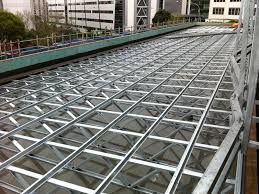Efficient Production of Downspouts with Advanced Roll Forming Equipment
Downspout Roll Forming Machine An Essential Tool for Seamless Gutter Production
In the ever-evolving world of construction and building materials, efficiency and precision are paramount. Among the innovative machinery that has revolutionized the manufacturing process is the downspout roll forming machine. This remarkable piece of equipment is essential for producing downspouts, which are vital components of any roofing system, ensuring water from the roof is efficiently directed away from the building’s foundation.
What is a Downspout Roll Forming Machine?
A downspout roll forming machine is specifically designed to create the profiles of downspouts from metal coils, usually aluminum or galvanized steel. The machine operates on a continuous feeding process, taking flat metal sheets and shaping them into the desired downspout profiles through a series of rollers. This ensures consistency in thickness, geometry, and length, producing high-quality downspouts that meet industry standards.
The Manufacturing Process Step by Step
The manufacturing process using a downspout roll forming machine is straightforward yet requires sophisticated technology. Here’s a brief overview of the steps involved
1. Material Loading The process begins with loading a coil of metal, either aluminum or galvanized steel, onto the machine.
2. Uncoiling The machine uncoils the metal and feeds it through a series of rollers.
3. Roll Forming As the metal passes through the rollers, it gradually takes on the shape of the desired downspout profile. This step is crucial as it ensures that the product has uniform dimensions.
4. Cutting Once the downspout reaches the desired length, a cutting mechanism precisely cuts it to size.
5. Finishing After cutting, the downspouts may undergo additional processes such as punching holes or adding seams, depending on design specifications.
Benefits of Using a Downspout Roll Forming Machine
The adoption of downspout roll forming machines in manufacturing has numerous advantages
downspout roll forming machine

- Efficiency The automated process significantly reduces labor costs and time. A single machine can produce large quantities of downspouts in a short period, enhancing productivity.
- Precision Roll forming ensures that downspouts are produced to exact specifications with uniform thickness and dimensions, reducing waste and ensuring quality control.
- Versatility Roll forming machines can be adjusted to produce various profiles, allowing manufacturers to cater to different market needs without significant downtime or reconfiguration.
- Cost-effectiveness By utilizing metal coils rather than pre-formed sections, manufacturers save on material costs and reduce lead times, making the production process more economical.
Applications in the Construction Industry
Downspouts play a critical role in the building's drainage system. Their primary function is to channel rainwater from the roof to the ground, preventing water accumulation along the foundation, which can lead to significant structural damage over time. Typically, downspouts are used in commercial and residential buildings, warehouses, and industrial facilities. The versatile nature of downspouts allows them to be styled and finished in various ways, enhancing the overall aesthetics of a building.
Choosing the Right Downspout Roll Forming Machine
When selecting a downspout roll forming machine, several factors should be considered
- Material Compatibility Ensure that the machine can handle the type of metal you intend to use. - Production Capacity Based on your production needs, choose a machine that can meet your hourly or daily output requirements.
- Customization Options Look for a machine that allows for easy adjustments to cater to different downspout profiles.
- After-Sales Support Invest in a machine from a reputable manufacturer that offers comprehensive customer service, ensuring that any technical issues can be promptly resolved.
Conclusion
The downspout roll forming machine is an indispensable tool in modern construction, combining technology and efficiency to meet the demands of today’s building projects. As the industry continues to innovate, these machines will undoubtedly play a significant role in shaping the future of building materials, ensuring that structures are not only functional but also sustainable and aesthetically pleasing. Whether you are a manufacturer looking to enhance your production capabilities or a builder seeking reliable downspouts, understanding the benefits of this advanced machinery can guide you in making informed decisions.
-
Roof Panel Machines: Buying Guide, Types, and PricingNewsJul.04, 2025
-
Purlin Machines: Types, Features, and Pricing GuideNewsJul.04, 2025
-
Metal Embossing Machines: Types, Applications, and Buying GuideNewsJul.04, 2025
-
Gutter Machines: Features, Types, and Cost BreakdownNewsJul.04, 2025
-
Cut to Length Line: Overview, Equipment, and Buying GuideNewsJul.04, 2025
-
Auto Stacker: Features, Applications, and Cost BreakdownNewsJul.04, 2025
-
Top Drywall Profile Machine Models for SaleNewsJun.05, 2025








